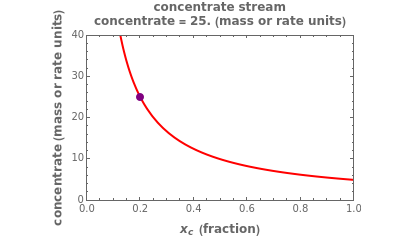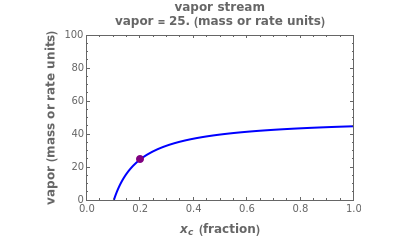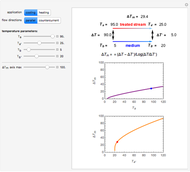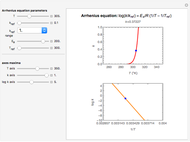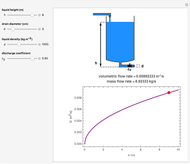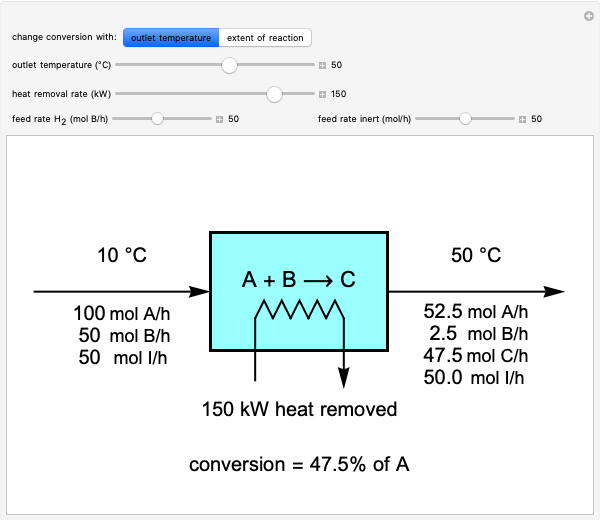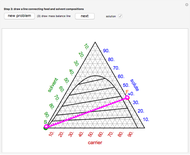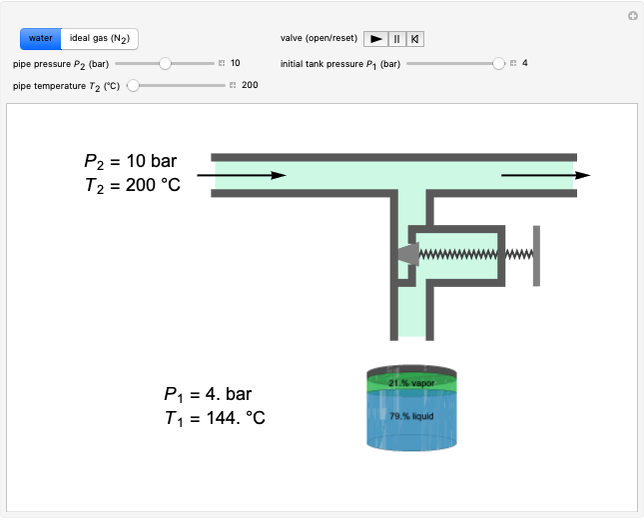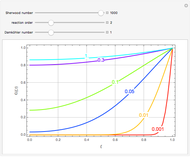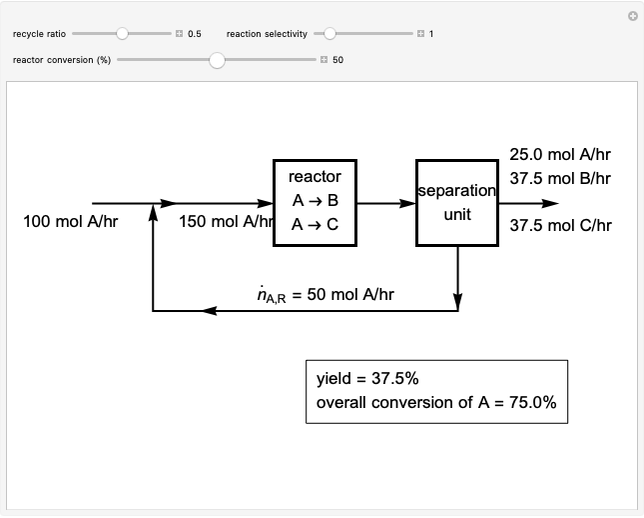Mass Balance in a Single-Stage Evaporator

Requires a Wolfram Notebook System
Interact on desktop, mobile and cloud with the free Wolfram Player or other Wolfram Language products.
This Demonstration calculates the amount of concentrate and vapor produced by a single-stage evaporator from a given amount of feed. The adjustable parameters are the feed's mass or mass flow rate and the concentrations of the feed and concentrate expressed as mass fractions on a wet basis.
Contributed by: Mark D. Normand, Maria G. Corradini, and Micha Peleg (August 2009)
Open content licensed under CC BY-NC-SA
Snapshots
Details
Degrees Brix (symbol °Bx) is a measure of the dissolved sugar-to-water mass ratio of a liquid.
Snapshot 1: orange juice concentration from 12 °Bx
Snapshot 2: making tomato paste, 28 °Bx, from tomato juice, 4.5 °Bx
Snapshot 3: 1:4 concentration of a solution
This Demonstration calculates the amount of vapor and concentrate produced by a single-stage evaporator. The adjustable parameters are the feed, expressed in terms of total mass or mass flow rate units, and the concentrations of the feed and concentrate, expressed as mass fractions on a wet weight basis. The mass balance is based on solving the equation  , where
, where  and
and  are the amount or flow rate of the concentrate and the feed, respectively.
are the amount or flow rate of the concentrate and the feed, respectively.  and
and  are the concentrations of the feed and concentrate, respectively. The amount or flow rate of the vapor,
are the concentrations of the feed and concentrate, respectively. The amount or flow rate of the vapor,  , is calculated from
, is calculated from  .
.
The  ,
,  , and
, and  values are entered with sliders and the Demonstration calculates and displays the corresponding values of
values are entered with sliders and the Demonstration calculates and displays the corresponding values of  and
and  . The Demonstration also plots
. The Demonstration also plots  versus
versus  and
and  versus
versus  for the current values of
for the current values of  and
and  . The current values of
. The current values of  and
and  corresponding to the chosen
corresponding to the chosen  are marked as purple dots on the plots. The maximum limit on the
are marked as purple dots on the plots. The maximum limit on the  axis may also be set with a slider.
axis may also be set with a slider.
References
[1] R. L. Earle and M. D. Earle, Unit Operations in Food Processing, NZIFST, Inc., 1983.
[2] M. Karel and D. B. Lund, Physical Principles of Food Preservation, 2nd ed., New York: Marcel Dekker, 2003.
[3] R. T. Toledo, Fundamentals of Food Process Engineering, 3rd ed., New York: Springer, 2007.
[4] R. P. Singh, "Single-Effect Evaporator".
Permanent Citation
